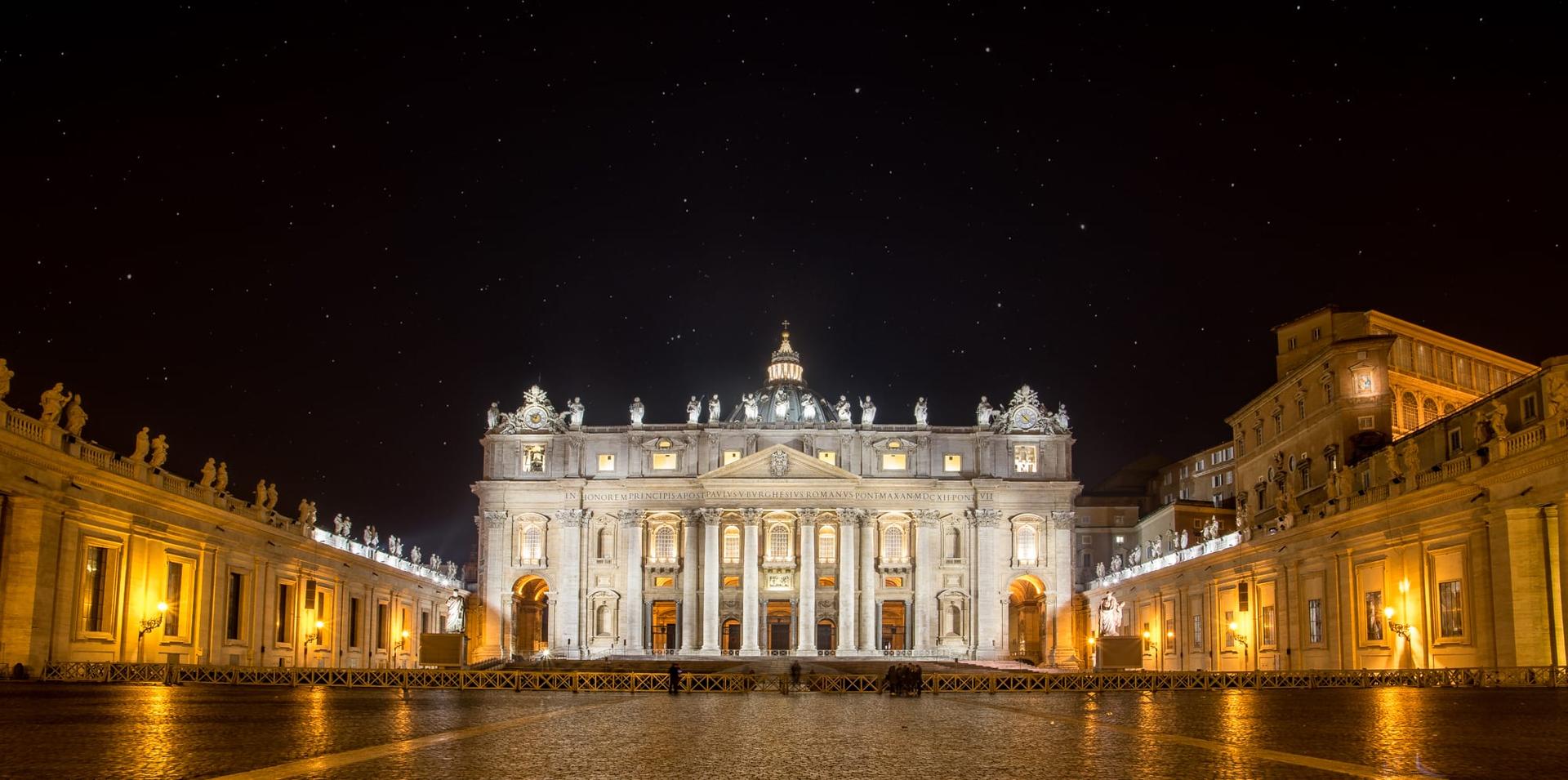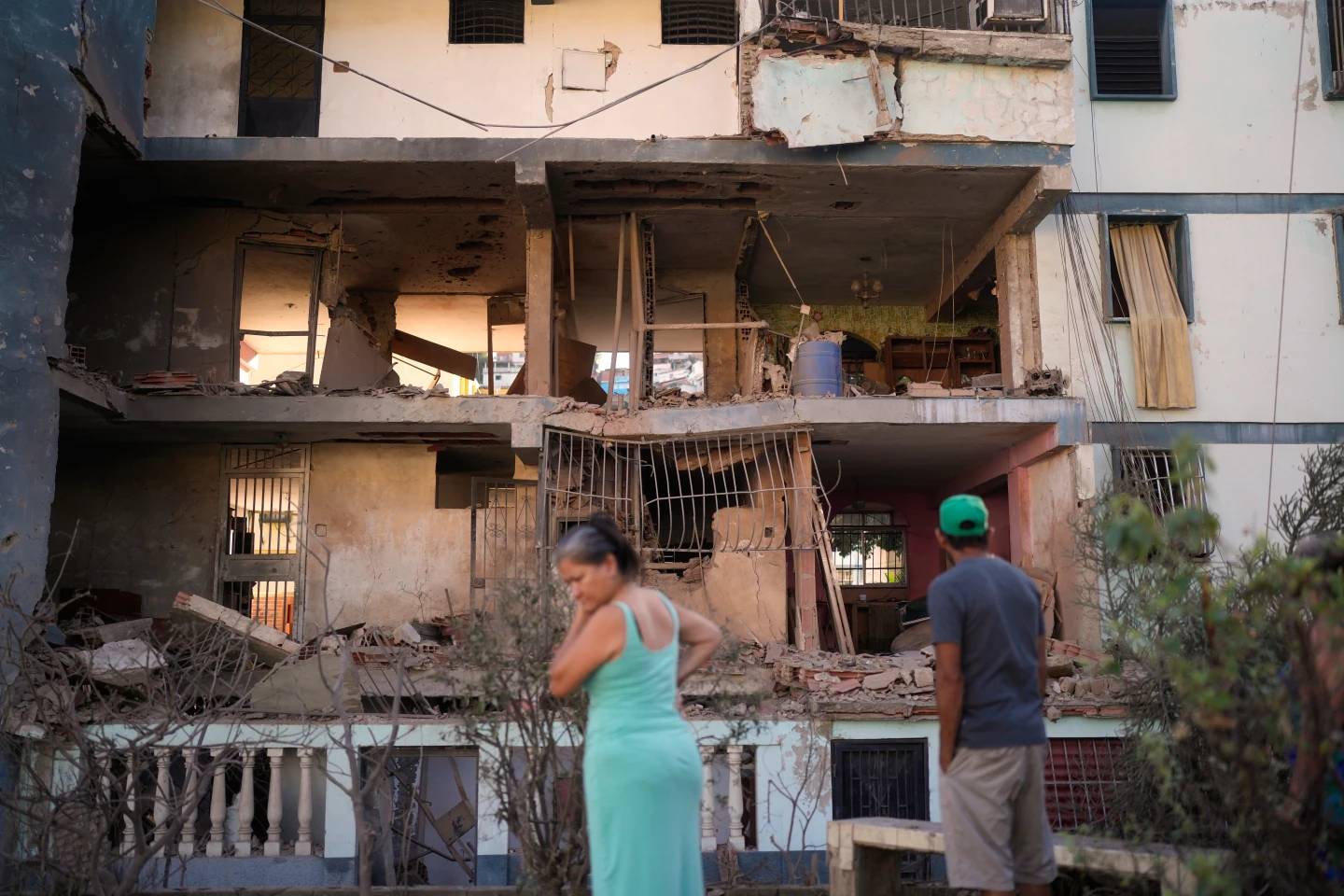ROME – “Houston, we’ve had a problem here.”
In April 1970, Mission Commander Jim Lovell, aboard the troubled Apollo 13, spoke those words that shook a nation and the entire world. The spacecraft had experienced a malfunction, and the fate of its three passengers hung by the gravitational pull of celestial bodies.
Back on earth – more precisely, in St. Peter’s Square at the Vatican – Pope Paul VI, along with more than 50,000 people gathered that day, bowed his head in prayer for the safe return of the astronauts.
“We share in the universal trepidation for the fate of these spaceflight heroes in the unforeseen epilogue to their daring and unfortunate mission,” the pope told the faithful. “We shall therefore raise a prayer to our Father who is in heaven for those audacious men, now in danger, and hence more brothers to us than ever.”
In the United States, the Senate and the House called the entire nation to prayer at 9 that evening, and thousands of people joined hands from Time’s Square in New York City to Cheshire County, New Hampshire for their countrymen’s safety.
From the Wailing Wall in Jerusalem to Hungary and even Japan, men and women of different cultures and beliefs built a ‘bridge of prayers’ connecting Earth to the troubled spaceship, until finally it made its way home.
“Everywhere, people prayed,” a New York Times article reported, leading President Richard Nixon to reflect that even “in these days of growing materialism, deep down there is still a great religious faith in this nation.”
Today – nearly 50 years later – as Pope Francis prepares to speak to six astronauts currently on the International Space Station on Oct. 26, it’s a good moment to look back at when popes sent prayers and tokens beyond Earth’s stratosphere, and the times when little pieces of the cosmos, taken from the unknown boundaries of space, made it back.

Paul VI and the Three Magi
Ground Control to Major Tom (ten, nine, eight, seven, six)
Commencing countdown, engines on (five, four, three)
Check ignition and may God’s love be with you (two, one, liftoff)
– Space Oddity, David Bowie 1969
The Catholic Church has been at the forefront of fostering curiosity about space from early on. The Gregorian calendar, which we use today to calculate the time the planet takes to orbit around the sun, was promulgated by Pope Gregory XIII, and at least 35 craters on the surface of the moon are named after Jesuit scientists who advanced humanity’s understanding of the universe.
When thinking of the Church’s relationship with space, one cannot forget to mention Blessed Paul VI.
In the summer papal residence of Castel Gandolfo, on the night between the 20th and 21st of July 1969, Paul VI looked to the heavens through the lenses of the Vatican Observatory telescope. The pope, like the rest of the world, was waiting in anticipation for the moment when man would, for the first time, walk on the moon.
Paul VI had blessed the voyage of Apollo 11 on its departure on July 16, kept them in his prayers, and referred to the mission often during his weekly general audiences.
As they departed on their historic voyage, the astronauts were carrying goodwill messages, including one from the pope praying “for this wonderful beginning,” and quoting Psalm 8 praising, “Lord, our Lord, how majestic is your name in all the earth!”
The papal message remains on the moon to this day, buried next to the American flag.
It was the time of the “Space Race” when technological developments followed one another at quick pace, creating a surge in innovation that still has ripple effects in the here and now. While Paul VI celebrated the instinct to discovery, he also wasn’t uncritical about its possible shadow side.
Only hours before the first manned moon landing, Paul VI warned that while “we celebrate a sublime victory,” war and hunger still plague humanity at home, and man must be mindful of the power and responsibility that technological advancement implies.
Paul VI watched the historic landing on television, and he once again sent blessings to “the conquerors of the moon, pale lamp of our nights and our dreams,” only a few minutes after.
The pope would finally meet the American heroes Neil Armstrong, Michael Collins and Edwin “Buzz” Aldrin at the Vatican on Oct. 16. He gifted them with a ceramic tile representing the Three Wise Men, telling the astronauts that, like them, the Magi were men of science who found their way by tracing the stars.
“Man has a natural urge to explore the unknown, to know the unknown; yet man has also a fear of the unknown,” Paul VI said at the audience. “Your bravery has transcended this fear and through your intrepid adventure man has taken another step toward knowing more of the universe.”
Also, like the original Magi, the astronauts came bearing gifts: The Apollo 11 lunar sample display, a wooden plaque containing the Vatican flag, and four “moon-rocks” that remain on display at the Vatican Museums.

Benedict XVI’s phone call to space
It’s lonely out in space
On such a timeless flight
– Rocket Man, Elton John 1973
In 2011, Benedict XVI became the first pope to speak to astronauts in space. Sitting in the Vatican Library in Rome, the pope video-called Italian astronauts Paolo Nespoli and Roberto Vittori aboard the International Space Station, who were accompanied by ten other crewmembers from a U.S. and Russian space station.
“This conversation gives me the chance to express my own admiration and appreciation to you and all those collaborating in making your mission possible, and offer my heartfelt encouragement to bring it to a safe and successful conclusion,” the pope said.
Benedict XVI prepared a set of questions in English for the astronauts on a wide range of topics including the environment, war and faith. The pope called their voyage “an adventure of the human spirit” and asked whether, in the midst of their work and research, they ever stopped and prayed to the creator.
“When we have a moment to look down, the beauty is the three-dimensional effect and the beauty of the planet is capturing our heart … capturing my heart,” Vittori answered.
“And I do pray. I do pray for me, for our families, for our future.”
The pope did not forget to pick up where his predecessor Paul VI left off, asking crew members if, from the vantage point of space, they ever thought of the violence and war that rattles our planet and how science could be a motor for peace.
“We fly over most of the world and you don’t see borders,” answered astronaut Mark Kelly. “But at the same time, we realize that people fight with each other and there’s a lot of violence in this world and it is really an unfortunate thing.”
He added that the technologies used by the space shuttle to create a “pretty much unlimited amount of energy” could be applied on Earth and potentially prevent conflicts.
The crewmembers portrayed an “indescribably beautiful” planet, which, at the same time, is very fragile and exposed.
In answer to the pope’s question on whether signs of pollution are visible from space, NASA scientist Ron Garan said that “the atmosphere, when viewed from space, is paper-thin, and to think that this paper-thin layer is all that separates every living thing from the vacuum of space and all that protects us is really a sobering thought.”
Astronaut Mike Fincke stressed that while Earth, gifted to us by God, “is the most beautiful planet in the whole solar system,” there is still a lot more universe to explore and discover.
“I think one of our most important messages is to let the children of the planet, the young people know, that there is a whole universe for us to go explore,” he said. “And when we do it together, there is nothing we cannot accomplish.”
Benedict XVI could not help but chuckle as he watched the astronauts float within the screen, defying gravity. Vittori showed a silver medal, etched with the image of the “Creation of Adam” by Michelangelo, which the pope had given to him before he left for his mission.
“I allow this coin to float in front of me to demonstrate microgravity,” he said, letting it drift toward his colleague who would bring it back to the Vatican and the pope. “I brought it with me to space, and he will take it down to Earth to then give back to you.”
Benedict XVI thanked the crew for their words and observations, which helped him reflect “on important issues which regard the future of humanity,” and hoped that the mission would promote global collaboration for peace and knowledge.
“In a sense, you are our representatives spearheading humanity’s exploration of new spaces and possibilities for our future, going beyond the limitations of our everyday existence,” he said. “I will continue to follow you in my thoughts and prayers and in bidding I impart my historic blessing.”
Now six years later, Francis will also become part of the Church’s ancient bond with space, and his words will likely stand on the “shoulders of giants,” such as Paul VI and Benedict XVI, who, among many others, paved the way for Catholicism to gaze beyond the far reaches of the universe.
















